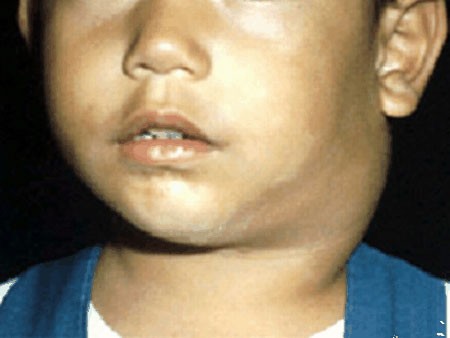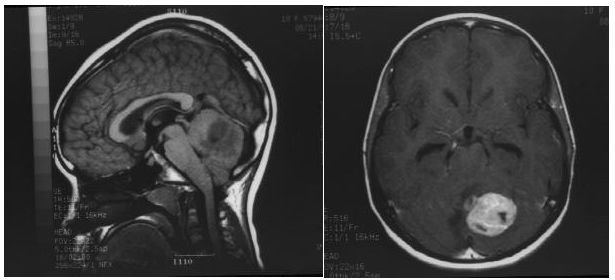A Case of Poncet’s Disease

A 15 year old girl was admitted with history of moderate grade fever of one month duration. One week after onset of fever she noticed onset of swellings in pre-auricular and post-auricular regions bilaterally, which were painless.
One week prior to entry she developed pain and swelling in both knee and ankle joints, associated with morning stiffness, and significant restriction of movement. She was treated with non steroidal anti- inflammatory drugs with partial relief .
She had evidence of bilateral small pre-auricular and post-auricular lymph node enlargement. She ‘also had bilateral supraclavicular and axillary lymphadenopathy which was non-tender, discrete and firm in consistency. There was mild hepatomegaly.
Both the knees and ankles were tender and showed limitation of movement.Examination of the knees revealed a mild effusion. Rest of the musculoskeletal and general examination was normal .
Investigations-
The Chest X-rays were suggestive of right paratracheal adenopathy. Ultrasound of the abdomen revealed presence of lymph nodes in the superior mesenteric and celiac artery regions. X-ray of the knee joints was normal
Lymph node biopsy of the right supraclavicular node showed caseating granulomas suggestive of tuberculosis.
INTRODUCTION-
Poncet’s disease or tuberculous rheumatism is a polyarthritis associated with visceral tuberculosis.
It appears to be a hypersensitivity reaction to tuberculoprotein.
There is no evidence of bacterial infection of the joints or their surrounding structures.
(sues AJ, Sturroek RD. Poncet’s disease – fact or fiction? A re-appraisal of
tuberculous rheumatism. Tubercle 1974; 55: 135-142)
Pathogenesis-
(*Ku F-S, Li C-L, Shen L-H, Hsing S : Differential diagnosis of rheumatic fever and allergic arthritis due to tuberculosis. Chin Med J (Engl) 1966; 85. 477.
Treatment- ATT resolves the symptoms in 3 weeks interval.
Prognosis- •Excellent. No residue.





